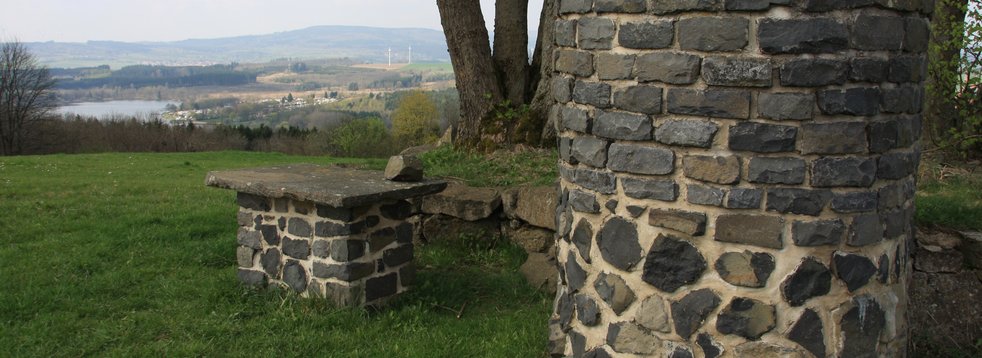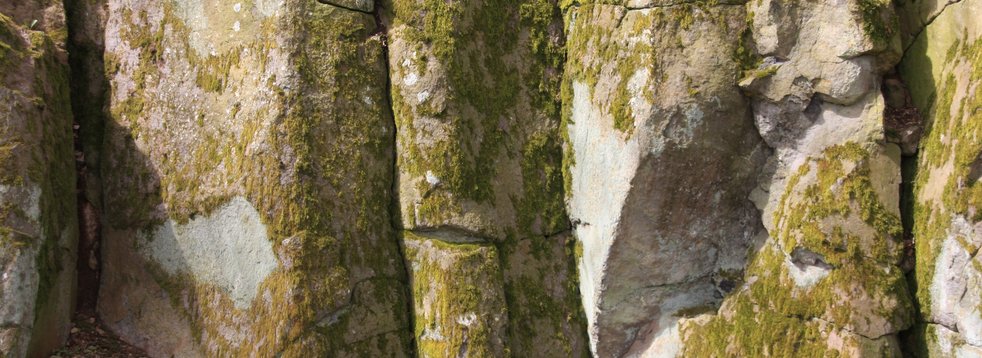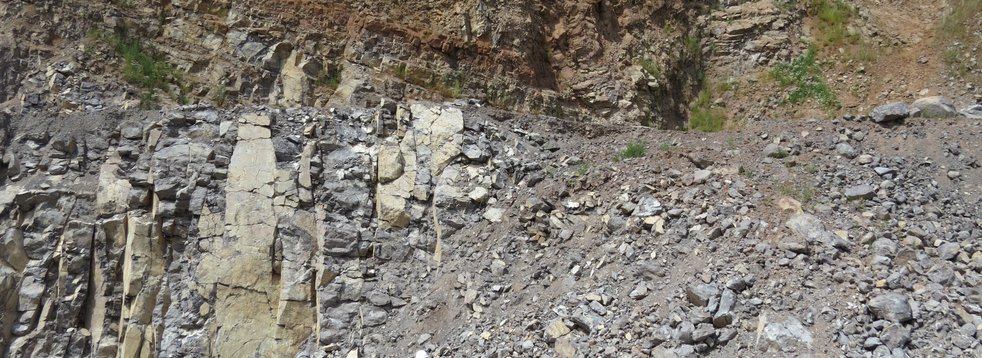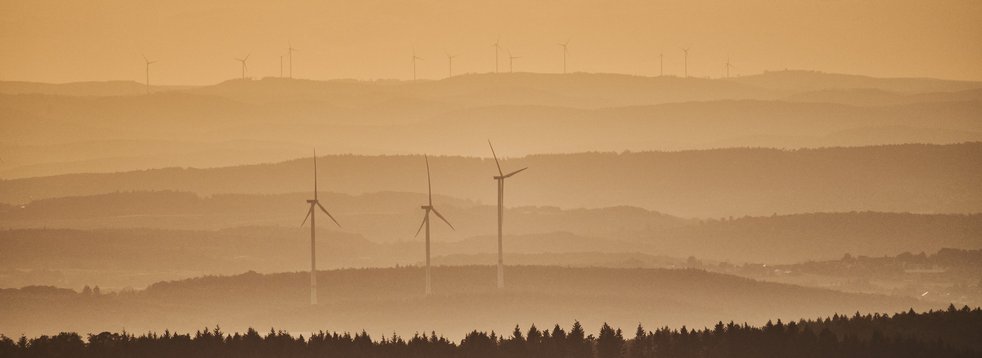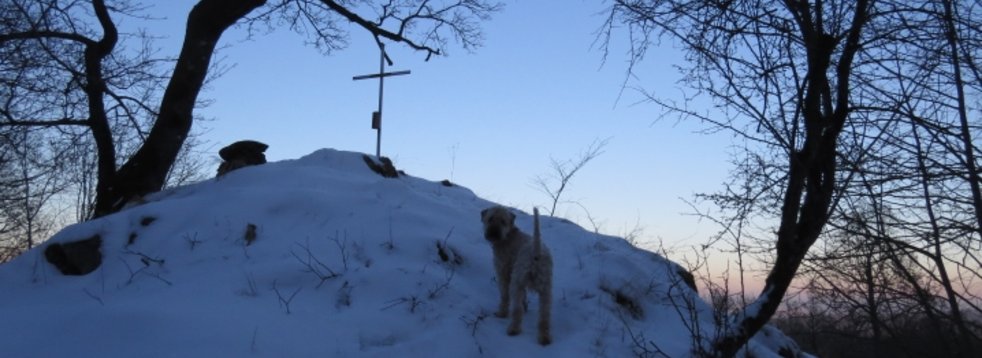Basalt summit of the Hoherodskopf

Basalt outcrop at the Hoehenrundweg
With 764 m the Hoherodskopf is the second highest elevation of the Vogelsberg. Its summit is located below the telecommunications tower directly at the car park in front of the information center. The outcrop consists of basalt, which has a dark grey-black colour and is fine-grained. Under the microscope the minerals olivine and plagioclase (feldspar) can be seen, but also ore and volcanic glass.
The older rock was penetrated several times and with a time lag by magma rising again (volcanic breakthroughs). At the Hoherodskopf there are four of these so-called breaches.
Fragments of the earth's mantle
Especially in the second volcanic phase of Vogelsberg, magmas were transported more or less directly from the upper mantle to the surface. Fragments of the mantle were torn upwards. This consists to a large extent of the rock peridotite (ultramafic). Characteristic for this rock is the high proportion of the mineral olivine. Different sized peridotite fragments of the earth's mantle can be found today for example at the geotope of the Hoherodskopf as inclusion in the basalt.
Literature
- Ehrenberg, K.-H. & Hickethier, H. (1985). Die Basaltbasis im Vogelsberg. Schollenbau und Hinweise zur Entwicklung der vulkanischen Abfolge. Geol. Jb. Hessen (113), 97–135.
Francis P. & Oppenheimer, C. (2004). Volcanoes. Oxford University Press. New York.
Reischmann, T. & Schraft, A. (2009). Der Vogelsberg: Geotope im größten Vulkangebiet Mitteleuropas. Hessisches Landesamt für Naturschutz, Umwelt und Geologie. Wiesbaden.




